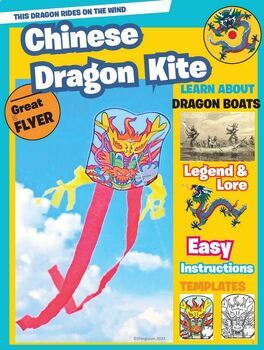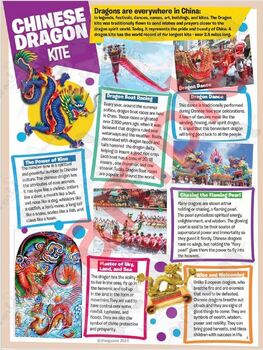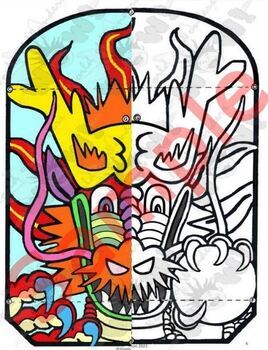Chinese Dragon Kite - DIY Stem/Steam
WOW - World of Wonders
9 Followers
Grade Levels
K - 8th, Homeschool
Subjects
Resource Type
Standards
CCSSRL.3.2
CCSSW.3.3
NGSSK-2-ETS1-2
NGSSK-2-ETS1-3
NGSS3-PS2-1
Formats Included
- PDF
Pages
11 pages
WOW - World of Wonders
9 Followers
Description
Gracefully riding in the wind, this colorful dragon kite rules the sky. In China, dragons are symbols of good luck, power, wisdom and wealth. These dragon kites are super easy to make and fly. Join this good luck Chinese tradition, celebrated by young and old alike.
- Colorful kite tales and stories about dragon boat races, dragon dances, and
Chinese dragon lore. - Great literature links to "The Water Dragon" and "Henry and the Kite Dragon"
- Experience the science of balanced and unbalanced forces while kite flying
- Photocopy, color, and construct a fun, high flying kite.
- Great kite for budding engineers.
- Simple photo instructions for making the dragon kite.
- How to make an easy breezy kite reel.
- Black and white, and colors templates.
- Inexpensive materials.
·
Total Pages
11 pages
Answer Key
N/A
Teaching Duration
Lifelong tool
Report this resource to TPT
Reported resources will be reviewed by our team. Report this resource to let us know if this resource violates TPT’s content guidelines.
Standards
to see state-specific standards (only available in the US).
CCSSRL.3.2
Recount stories, including fables, folktales, and myths from diverse cultures; determine the central message, lesson, or moral and explain how it is conveyed through key details in the text.
CCSSW.3.3
Write narratives to develop real or imagined experiences or events using effective technique, descriptive details, and clear event sequences.
NGSSK-2-ETS1-2
Develop a simple sketch, drawing, or physical model to illustrate how the shape of an object helps it function as needed to solve a given problem.
NGSSK-2-ETS1-3
Analyze data from tests of two objects designed to solve the same problem to compare the strengths and weaknesses of how each performs.
NGSS3-PS2-1
Plan and conduct an investigation to provide evidence of the effects of balanced and unbalanced forces on the motion of an object. Examples could include an unbalanced force on one side of a ball can make it start moving; and, balanced forces pushing on a box from both sides will not produce any motion at all. Assessment is limited to one variable at a time: number, size, or direction of forces. Assessment does not include quantitative force size, only qualitative and relative. Assessment is limited to gravity being addressed as a force that pulls objects down.





